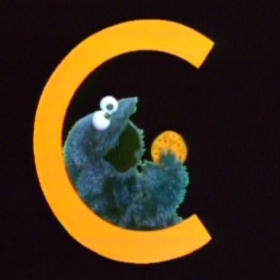Conjunctions

The vast majority of Icelandic conjunctions have simple and intuitive equivalents in English and do not bear repeating outside of a dictionary. In this lesson we’ll focus on those conjunctions that do not have simple equivalents, or are common enough to still be of interest to the second language student.
First we will take a look at the most common conjunctions in Icelandic: en, og, eða, að, ef and sem. Then we will look at less common conjunctions which, for whatever reason, may cause confusion for the learner. These will be heldur, enda, and þegar, as well as an honorable mention, “ástæðan fyrir því að”. But first we will get a recap on what conjunctions actually are.
What Are Conjunctions?
Conjunctions are essentially connectors. They connect either phrases or clauses.
A phrase is a group of words which functions as a single unit which can be replaced with one word. “Those big apples over there” is one noun phrase, as it can be replaced with one word: “He wanted those big apples over there: he wanted them.” “Cheated on the exam” is one verb phrase, as it can also be replaced by one word: “They cheated on the exam: did you do that?”
A clause is a group of words that includes a subject and a verb. “He passed” is a clause. So is “he cheated”. “He passed even though he cheated” is a sentence composed of two clauses connected by the conjunction “even though”.
With the grammatical background out of the way we can get to talking about the Icelandic conjunctions.
The most common conjunctions: en, og, eða, að, ef, and sem.
En is equivalent to the English but. It has slightly more use in Icelandic, also being used to change the topic where English uses and. It can connect both phrases and clauses.
- Ég er ungur en ég er ekki heimskur > I’m young, but I’m not stupid.
- Ég er ungur en ekki heimskur > I’m young, but not stupid.
- Ég segi bara allt fínt, en þú? > I’m fine, and you?
Og is equivalent to the English and. It can connect both phrases and clauses. It features in a few idiomatic “multi word” conjunctions, such as eins og (like) and bæði…og (both…and). As these are idiomatic, the meaning of the phrase as a whole is not necessarily related to the meaning of its individual words. Just as it is meaningless to ask what ants means in the word pants, it is meaningless to ask what og means in the phrase eins og.
- Ég er ungur og ég er heimskur > I’m young and I’m stupid.
- Ég er ungur og heimskur > I’m young and stupid.
- Hann er sterkur eins og naut > He’s strong like a bull.
- Þau eru bæði sæt og fín > They are both cute and fancy.
Eða is equivalent to the English or. It can connect both phrases and clauses. In informal spoken language eða can be “dangled” at the end of a phrase. This would usually translate to “or what”, “or something”.
- Ertu heimskur eða ertu bara latur? > Are you stupid or are you just lazy?
- Ertu heimskur eða bara latur? > Are you stupid or just lazy?
- Ertu heimskur eða? > Are you stupid or something?
Að is equivalent to the English that, following words of thinking, saying, believing etc. It connects clauses.
- Hann segir að hann ætli að koma > He says that he is going to come.
- Ég veit að þetta er satt > I know that this is true.
In addition to its role as a conjunction, the word form að can mean different things depending on context. This versatility can give the Icelandic student a hard time. In addition to a conjunction it can be, for example, a preposition (hann fór að húsinu > he went up to the house) or an infinitive particle, much like English to (ég ætla að tala > I’m going to talk). Context will in most cases make the meaning clear, once you are familiar with the different uses.
Að may sometimes be added to the end of conjunctions that do not need it, such as ef (að) and sem (að) (see below). This has absolutely no effect on the meaning whatsoever, and its inclusion or exclusion is entirely up to the whims of the speaker at any given moment. In poetry or music this may be used to add or remove a syllable to maintain the meter.
Ef (að)…(þá) is equivalent to the English if…(then). Að can optionally be added and doesn’t affect the meaning. Þá can optionally be dropped, just like the English then. Ef connects clauses. Note the word order: when the ef clause comes first, the entire clause takes the first position, so it is followed by the verb of the main clause in order to maintain V2 (verb second position).
- Lífið væri auðveldara ef þú ættir pening > Life would be easier if you had money.
- Ef þú átt pening þá er lífið auðveldara > If you have money, then life is easier.
- Ef að þú ættir pening væri lífið auðveldara > If you had money, life would be easier.
Sem (að) has no single equivalent in English, but rather a legion of them: who, whom, that, which, what, and where. Að can optionally be added and doesn’t affect the meaning. Sem connects relative clauses, that is, clauses that describe a noun, much like an adjective would. Note that the subject in the relative clause may sometimes be omitted, such as in the first example.
- Strákurinn sem talaði við mig kom aftur > The boy who talked to me came back.
- Strákurinn sem að ég talaði við kom aftur > The boy whom I talked to came back.
- Þetta er borðið sem ég smíðaði > This is the table that I built.
- Hann er frá Myanmar, sem að er í Asíu > He is from Myanmar, which is in Asia.
When sem translates as what or where, it is joined by það or þar.
- Þetta er það sem ég vil gera > This is what I want to do (lit. that which I want to do).
- Hann er þar sem að við hittumst fyrst > He is where we first met (lit. there where we met first).
Interesting Conjunctions
Heldur is equivalent to the English rather, but rather or but when it is used in the context of comparison or preference. It connects both phrases and clauses. When used to connect clauses, the subject and verb must be inverted.
- Þeir elda það ekki bara heldur senda þeir heim líka > They don’t just cook it but they deliver, too.
- Ég vil ekki kók, heldur pepsí > I don’t want coke, but pepsi.
- Vandamálið er ekki skortur á fjármagni, heldur skipulagi > The problem is not lack of funding, but rather of planning.
Enda connects clauses, and it has no true English equivalent. It indicates that there is some expected relationship between the two sentences it connects. Note that this expected relationships is not necessarily causal, so because is by no means an accurate translation. Possibly the closest thing to an English equivalent is the semicolon or the dash.
- Jón var mjög svangur, enda hafði hann ekki borðað allan daginn > Jón was very hungry; he hadn’t eaten all day.
- Hún er hætt að vinna, enda orðin gömul > She has stopped working, which is natural since she is old.
- Það voru margir í miðbænum, enda var veðrið gott > There was a lot of people downtown – unsurprisingly, as the weather was good.
Þegar (að) is equivalent to the English when. Hvenær, the Icelandic question equivalent to the English when, can only and exclusively be used for questions. Að can optionally be added and doesn’t affect the meaning. Þegar connects clauses. Note the word order: when the “þegar” clause comes first, the entire clause takes the first position, so it is followed by the verb of the main clause to maintain V2 (verb second position).
- Ég byrjaði að læra á gítar þegar ég var fimm ára > I started learning the guitar when I was five.
- Þegar ég var fimm ára byrjaði ég að læra á gítar > When I was five, I started learning the guitar.
While not strictly a conjunction, an honorary mention should go to the phrase “ástæðan fyrir því að”, as it translates to a conjunction. It connects clauses. This is equivalent to the English why. Af hverju, the Icelandic question equivalent to the English why, can only and exclusively be used for questions. The að here is not optional.
- Þetta er ástæðan fyrir því að ég vildi koma > This is why I wanted to come (lit. this is the reason for it that I wanted to come).
- Ástæðan fyrir því að ég vildi koma er að ég var einmana > The reason why I wanted to come is that I was lonely (lit. the reason for it that I wanted to come is that I was lonely)
Related reading
If you found this interesting, you might also be interested in these articles.




